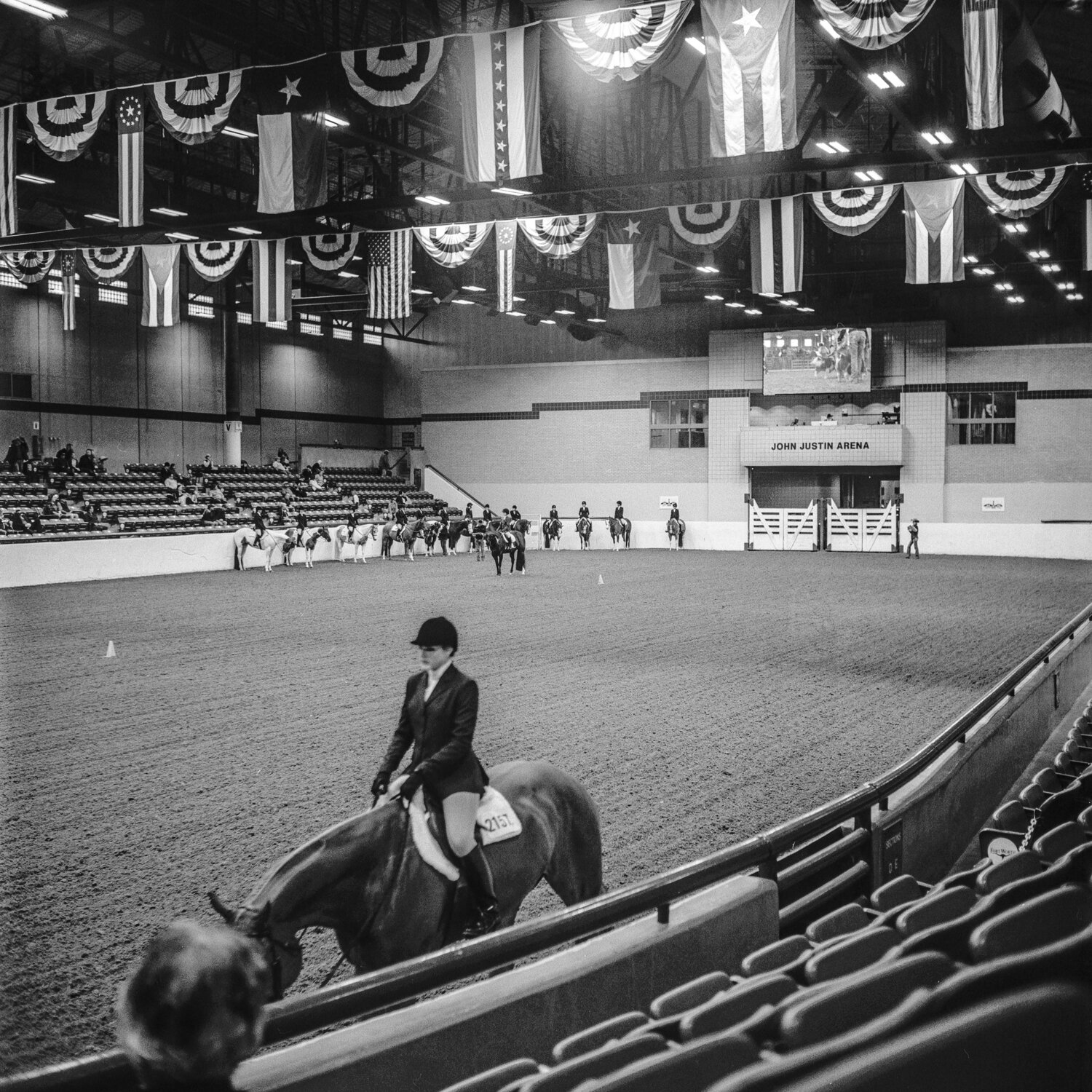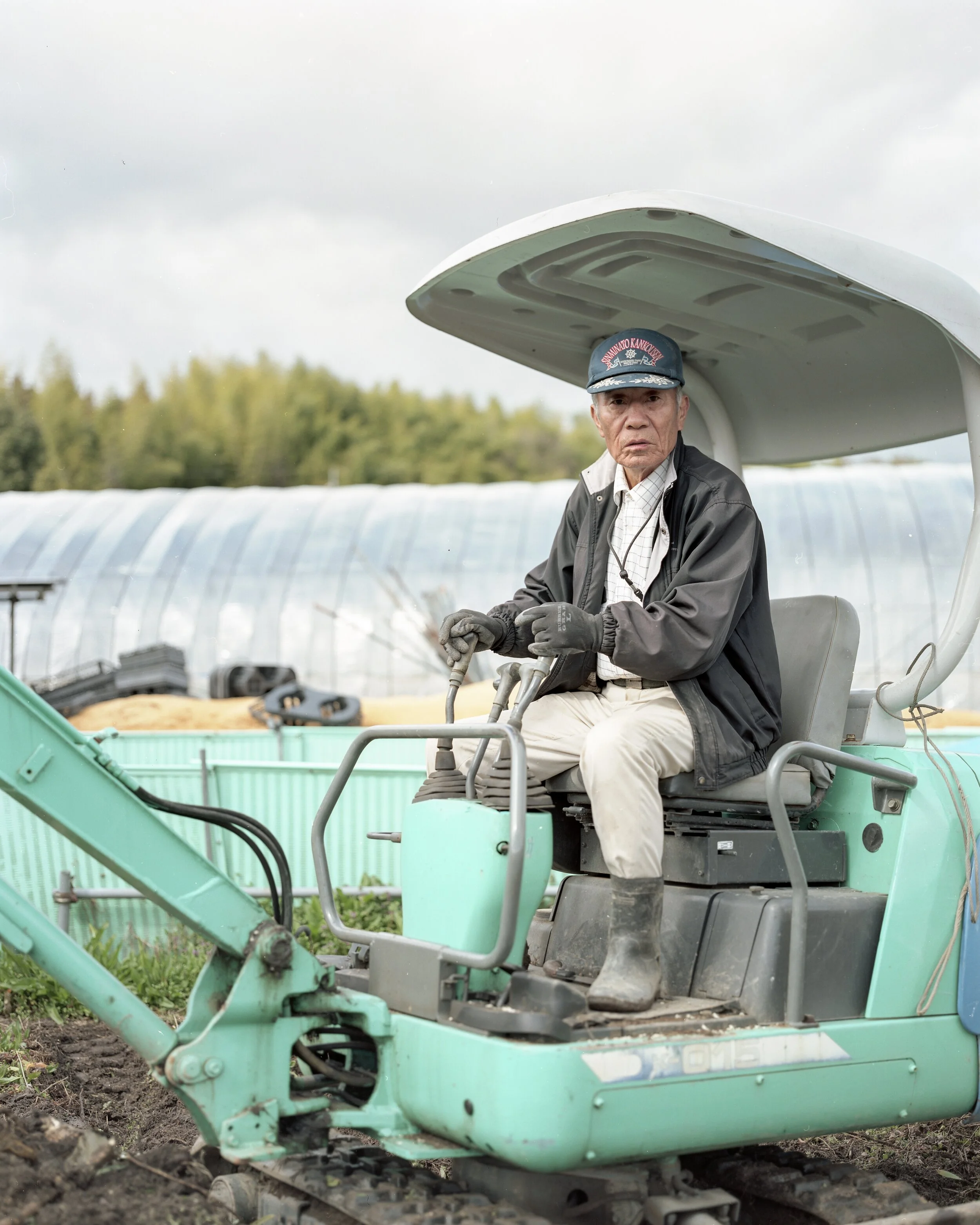Fort Worth Stock Show and Rodeo: Dustin Davis
PC: Dustin Davis
Andrew D. McClees (ADM): For those who aren't familiar with you, could you please introduce yourself and give us an overview of your work?
Dustin Davis (DD): My name is Dustin Davis, based out of Fort Worth, Texas. I’ve been hobby shooting for about 10 years. As of the last year, year and a half (after moving to Texas), I’m attempting to make a more serious effort into creating work that matters to me. When I made the move to Texas, my inspiration came from the feeling of insignificance in a place that was much larger than I’m used to.
ADM: What was the impetus to document the Rodeo and Stock Show?
DD: I have always had an an interest in subcultures, as a whole. Growing up, my family and I were big into the BMX racing scene. We lived and breathed it. Interestingly enough, the stock show reminded me a lot of our time racing BMX.
Moving here, I knew what a rodeo was. I didn’t know what exactly the stock show portion of the event was though. Many people suggested to go to the Fort Worth Stock Show & Rodeo. It was a culture shock for me, to say the least. I think that’s what caused my desire to document it. I’m an outsider, taking in all sights, sounds and smells.
PC: Dustin Davis
ADM: That's really interesting - did you ever shoot/or document the BMX racing scene when you were in it? also, as someone who's not super familiar with BMX or Rodoes - can you flesh out the similarities for me? Also, if you did document or photograph the BMX races, did you find your approach changing much if at all either due to time and experience, and subject matter when you started to work on the rodeo?
DD: I raced BMX when I was about 12-15(ish), and at that age I had no interest in photography. I was too obsessed with my bicycles. There wasn’t a lot of direct similarities between the two, but the main one was how much of a family event it is. There’s an overall feeling of friendly competition too. And the actual showing of the animal, reminds me of the race itself (just a little slower paced ha). Mind you, this is more of the stock show portion of the event, not so much the rodeo.
ADM: So far the images from the Rodeo that I've seen have all been in black and white. Why black and white over color, and will you continue the project in only black and white?
DD: I debated color vs black and white or even mixing the two before continuing this year. I had started it using black and white and wasn’t sure if including color would help or hurt the project. There is not a lot of color at the events (except the Escaramuza event), so I’m not sure the viewer would be missing out on much. Alternatively, there’s something about black and white that fits this subject matter.
PC: Dustin Davis
ADM: That's tracks, the photos you have look really great, and it's really cohesive - that said, do you think you'd go back and do a separate section in color on the Escaramuza section?
DD: Thank you! I could see doing that. But I feel I would separate that work from the Stock Show work itself. It would be really great to get some more behind the scenes if I went that direction. Definitely portraits, since all of their dresses are so bright and detailed. I think accessibility would be more challenging for the Escaramuza work though.
ADM: Following that, most of the photos I've seen of the project so far have been fairly topographic or street leaning, and you mention an interest in doing portraits of the people involved - do you have a feeling of how you'd like to do those portraits, or what form you'd like them to take, in context with the rest of the photos you've shot so far?
DD: The portraits would ideally spur of the moment requests of people at the stock show. I’d have to get over the whole fear of approaching a random stranger first. But I just don’t want to overthink it. Some of Louis Carlos Bernal’s portraits resonate with me (his Barrio work is on my ‘to buy’ list) in regards to context of current photos.
ADM: What do you think the eventual scope of the project will be, and what form do you think it will take, and why? Also will you document other rodeos/stock shows, or is the project strictly focused on the DFW Stock Show/Rodeo?
PC: Dustin Davis
DD: I know people may have negative feelings about stock shows. My documenting is not about being for or against the showing and selling of animals - I just want to share my experience. At some point, I would like to make a zine or small book of the work. I really don’t know when that will be though. I feel this will be a long term project so that will play into any final piece. I do plan on documenting as many as possible. There is really only two that are near me, so I need to be realistic on how much time I am able to invest into actually going to the stock shows. I would like to including portraits of people involved in the stock shows as well.
ADM: Just for context, for me, a yankee - Are the stock shows a regular event, and sometimes separate from the rodeo? I know Houston's rodeo is annual, but I'm not terribly familiar with the practice, beyond that.
DD: The Fort Worth Stock Show & Rodeo is every year in January. There’s one a little north of me that happens in August (I think). I’m guessing most of the other major cities in Texas have one every year. From what I gather, the these big events include the stock show and rodeo. The rodeos are the big event at night, while the stock show happens during the day. There are probably smaller stock shows scattered around that don’t have a rodeo event.
ADM: What were some of the main influences on you for this project, photographic or otherwise?
PC: Dustin Davis
DD: Tough one here. I think the main influence for this would be just the fact that this culture is so foreign to me and I’m fascinated by what’s all involved.
ADM: I'd love to see the zine or book when it's out - what format do you think it'll take, or what do you think the big sections of the book will look like?
DD: You’ll be the first to know about a zine or book! I’ve never created a book (or really put focus into a project like this), so culling and editing the images to flow well will be new for me. At this stage, I’m seeing the images as more of vignettes of the stock show culture and that’s what it could end up staying.
ADM: For someone in the middle of relocating - either to a completely new environment, or a quasi-familiar one, what advice would you have for documenting that (or an unfamiliar event like you have), and adapting to it?
DD: Embrace the experience. For me, the new environment opened me up to enjoying film again, creating work that I enjoy and work that is for me. Without relocating to Texas, i wouldn’t have been able to start this stock show project. I didn’t expect for other people to be all that interested in the topic, so I am excited to document it, for myself.
ADM: From Adrian Otero Vila: If you could go back in time and stand next to a photographer when they were making an image, which one would it be?
PC: Dustin Davis
DD: Pulling out the tough questions, Adrian! I’m going to say three photographers. First, Matt Eich’s zebra image from Carry Me Ohio, Edward S. Curtis’ Canyon De Chelly, or Gordon Parks’ Negro Woman in her Bedroom.
ADM: What's one question you have for the next photographer? you can answer it yourself if you'd like?
DD: What’s something you’ve learned in the past year?
As I mentioned above, create work for yourself. When you enjoy making the work for you, it will show through in the work itself. We all want to find our audience, but that will come naturally.
Someone recently shared this quote from Alec Soth‘s Magnum course: ‘We all kind of know pictures that other people like , that our friends like, that would get us likes on Instagram... but what you need to do is make work that doesn’t succeed, that takes you to a new place and eventually that’ll find its audience.
ADM: Where can we see more of your work?
DD: Right now, Instagram @_digitaldust. I’m currently working on culling work and updating my website at http://www.dustindavisphoto.com
















